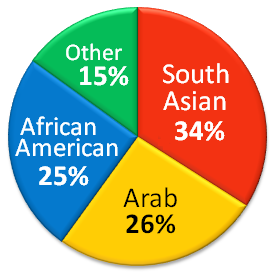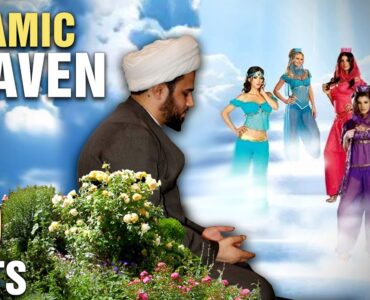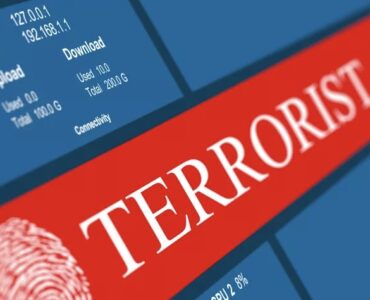
Islam In The United States
Part III: Demographics
The U.S. Census Bureau does not collect data on religious identification. Various institutions and organizations have given widely varying estimates about how many Muslims live in the U.S. Tom W. Smith, author of “Estimating the Muslim Population in the United States,” said that of twenty estimates he reviewed during a five-year period until 2001, none was “based on a scientifically-sound or explicit methodology. All can probably be characterized as guesses or assertions. Nine came from Muslim organizations such as the Islamic Society of North America, the Muslim Student Association, the Council on American-Islamic Relations, the American Muslim Council, and the Harvard Islamic Society or unspecified ‘Muslim sources.’ None of these sources gave any basis for their figures.” In 2005, according to The New York Times, more people from Muslim countries became legal permanent United States residents — nearly 96,000 — than in any year in the previous two decades.

According to the U.S. Department of State (2009), the largest ethnic groups of American Muslims are those of South Asian, Arab and African-American descent
According to a Pew Forum estimate, in 2017 there were 34.5 million Muslims, constituting about 1.1 percent of the total U.S. population. A Pew Forum report on American religion found that Muslims accounted for 0.9 percent of American adults in 2014, up from 0.4 percent in 2007, due largely to immigration. Retention rates were high, at 77 percent, similar to Hindus (80 percent) and Jews (75 percent); most people who leave these religions become unaffiliated, although ex-Muslims were more likely to be Christians than ex-Hindus or ex-Jews were. Conversely, 23 percent of American Muslims were converts, including 8 percent from historically 7 Protestant traditions, 6 percent from being unaffiliated, 4 percent from Catholicism, and 3 percent from mainline or evangelical Protestantism. By race, in 2014, 38 percent were non-Hispanic white (including Arabs and Iranians, up from 32 percent in 2007), 28 percent were Asian (mostly Indians, Pakistanis, and Bangladeshis, up from 20 percent in 2007), 28 percent were black (down from 32 percent), 4 percent Hispanic (down from 7 percent), and 3 percent of mixed or other race (down from 7 percent). Since 2007, the black proportion had shrunk, while the white and Asian proportions had grown, mainly due to immigration as most black Muslims were native U.S. blacks.
According to CAIR, no scientific count of Muslims in the U.S. has been done and the larger figures should be considered accurate. Some journalists have also alleged that the higher numbers have been inflated for political purposes.
A Pew Forum estimate in 2017 estimated there were 34.5 million Muslims, constituting about 1.1 percent of the total U.S. population. A Pew Forum report on American religion found that Muslims accounted for 0.9 percent of American adults in 2014, up from 0.4 percent in 2007, due largely to immigration. Retention rates were high, at 77 percent, similar to Hindus (80 percent) and Jews (75 percent); most people who leave these religions become unaffiliated, although ex-Muslims were more likely to be Christians than ex-Hindus or ex-Jews were. Conversely, 23 percent of American Muslims were converts, including 8 percent from historically 7 Protestant traditions, 6 percent from being unaffiliated, 4 percent from Catholicism, and 3 percent from mainline or evangelical Protestantism. By race, in 2014, 38 percent were non-Hispanic white (including Arabs and Iranians, up from 32 percent in 2007), 28 percent were Asian (mostly Indians, Pakistanis, and Bangladeshis, up from 20 percent in 2007), 28 percent were black (down from 32 percent), 4 percent Hispanic (down from 7 percent), and 3 percent of mixed or other race (down from 7 percent). Since 2007, the black proportion had shrunk, while the white and Asian proportions had grown, mainly due to immigration as most black Muslims were native U.S. blacks.
In January 2018, the Pew Research Center projected that by 2040, Muslims will replace Jews as the second-largest religious group in the U.S. (after Christians). By 2050, the number of American Muslims was projected to be twice the size of the 2017 Muslim population. Pew cited high fertility rates among American Muslims and immigration of Muslims to the U.S. as the reasons for the growth. It said that religious conversion was not expected to be a significant factor, because the number of American converts to Islam is roughly the same as the number of people who leave the religion.
Race
According to a 2001 study written by Ihsan Bagby, an associate professor of Islamic studies at the University of Kentucky, of Americans who convert to Islam, 64 percent are African American, 27 percent are White, 6 percent are Hispanic of any race, and 3 percent are other. Around that time increasing numbers of American Hispanics converted to Islam. Many Hispanic converts in Houston said that they often had been mistaken as of being of Pakistani or Middle Eastern descent, due to their religion. Many Hispanic converts were former Christians.
Since the arrival of South Asian and Arab communities during the 1990s there has been divisions with the African Americans due to the racial and cultural differences; however, since September 11, 2001, the two groups joined together when the immigrant communities looked towards the African Americans for advice on civil rights.
Religion
According to a 2014 religious survey, 64 percent of Muslims believe religion is very important, compared to 58 percent of Catholics who believe so. The frequency of receiving answers to prayers among Muslims was, 31 percent at least once a week and 12 percent once or twice a month. Nearly a quarter of the Muslims are converts to Islam (23 percent), mainly native-born. Of the total who have converted-, 59 percent are African American and 34 percent white. Previous religions of those converted was Protestantism (67 percent), Roman Catholicism (10 percent), and 15 percent no religion.
Mosques are usually explicitly Sunni or Shi’a although they are over 55 Ahmadiyya mosques as well. There are 2,106 mosques in the United States as of 2010, and the nation’s largest mosque, the Islamic Center of America, is in Dearborn, Michigan. It caters mainly to the Shi’a Muslim congregation; however, all Muslims may attend this mosque. It was rebuilt in 2005 to accommodate over 3,000 people for the increasing Muslim population in the region. Approximately half (50 percent) of the religious affiliations of Muslims is Sunni, 16 percent Shi’a, 22 percent non-affiliated and 16 percent other/non-response. Muslims of Arab descent are mostly Sunni (56 percent) with minorities who are Shi’a (19 percent) Muslims of South Asian descent including Bangladeshis (90 percent), Indians (82 percent) and Pakistanis (72 percent) are mainly Sunni, other groups such as Iranians are mainly Shi’a (91 percent). Of African American Muslims, 48 percent are Sunni, 34 percent are unaffiliated (mostly part of the Community of W. Deen Mohammed), 16 percent other (mostly Nation of Islam and Ahmadiyya) and 2 percent Shi’a.
In many areas, a mosque may be dominated by whatever group of immigrants is the largest. Sometimes the Friday sermons, or khutbas, are given in languages like Urdu, Bengali or Arabic along with English. Areas with large Muslim populations may support a number of mosques serving different immigrant groups or varieties of belief within Sunni or Shi’a traditions. At present, many mosques are served by imams who immigrate from overseas, as only these imams have certificates from Muslim seminaries.
Data from the General Social Survey in the United States show that 32 percent of those raised Muslim no longer embrace Islam in adulthood, and 18 percent hold no religious identification.
Education And Income
The household income levels of American Muslims are about as evenly distributed as the general American population.
When it comes to education, the Institute for Social Policy and Understanding reported in 2017 that across the board, American Muslims, Protestants, and Catholics have similar education levels. It has also been found that Muslim women (73 percent) are more likely than Muslim men (57 percent) to go on to pursue higher education beyond high school, and they are also more likely to report being in the middle class.
Among South Asians in the country, the large Pakistani American community stands out as particularly well educated and prosperous, with education and income levels exceeding those of U.S.-born whites. Many are professionals, especially in medicine (they account for 2.7-5 percent of America’s physicians), scientists, engineers, and financial analysts, and there are also a large number of entrepreneurs. There are more than 15,000 medical doctors practicing medicine in the USA who are of Pakistani origin alone and the number of Pakistani American millionaires was reported to be in the thousands. Shahid Khan a Pakistani-born American multi billionaire businessmen owner of the Jacksonville Jaguars of the National Football League (NFL) making him the first and only ethnic minority member to own one, he also owns English Premier League team Fulham F.C., and automobile parts manufacturer Flex-N-Gate in Urbana, Illinois.
Forty-five percent of immigrant Muslims report annual household income levels of $50,000 or higher. This compares to the national average of 44 percent. Immigrant Muslims are well represented among higher-income earners, with 19 percent having annual household incomes of $100,000 or higher (compared to 16 percent for the Muslim population as a whole and 17 percent for the U.S. average). This is likely due to the strong concentration of Muslims in professional, managerial, and technical fields, especially in information technology, education, medicine, law, and the corporate world.
Conversion To Islam In Prisons
In addition to immigration, the state, federal and local prisons of the United States may be a contributor to the growth of Islam in the country. According to J. Michael Waller, Muslim inmates constitute 15–20 percent of the prison population, or roughly 350,000 inmates in 2003. Waller states that these inmates mostly come into prison as non-Muslims. He also says that 80 percent of the prisoners who “find faith” while in prison convert to Islam. These converted inmates are mostly African American, with a small but growing Hispanic minority. Waller also asserts that many converts are radicalized by outside Islamist groups linked to terrorism, but other experts suggest that when radicalization does occur it has little to no connection with these outside interests.
Population Concentration
There were calculated to be 2.595 million Muslim adherents across the United States in 2010. Islamic populations are 0.6 percent of the U.S. population per Fareed Zakaria quoting Pew Research Center, 2010.
By State
| STATE | PERCENTAGE |
| Illinois | 2.8 |
| Virginia | 2.7 |
| New York | 2.0 |
| New Jersey | 1.8 |
| Texas | 1.7 |
| Michigan | 1.2 |
| Florida | 0.9 |
| Delaware | 0.8 |
| California | 0.6 |
| Pennsylvania | 0.6 |
By City
New York City had the largest number of Muslims with 69,985. In 2000, Dearborn, Michigan, ranked second with 29,181, and Los Angeles ranked third with 25,673; although Paterson, New Jersey, in the New York City Metropolitan Area, was estimated to have become home to 25,000 to 30,000 Muslims as of 2011. Philadelphia, Pennsylvania, was estimated to have 30,000 to 50,000 Muslims as of 2012. Paterson, New Jersey, has been nicknamed Little Ramallah and contains a neighborhood with the same name, with an Arab American population estimated as high as 20,000 in 2015.
Mosques
The number of mosques in the United States in 2011 was 2,106. The six states with the greatest number of mosques were: New York 257, California 246, Texas 166, Florida 118, Illinois 109, New Jersey 109.
Culture
Muslims in the United States have increasingly made their own culture; there are various Muslim comedy groups, rap groups, Scout troops and magazines, and Muslims have been vocal in other forms of media as well.
Within the Muslim community in the United States there exist a number of different traditions. As in the rest of the world, the Sunni Muslims are in the majority. Shi’a Muslims, especially those in the Iranian immigrant community, are also active in community affairs. All four major schools of Islamic jurisprudence (fiqh) are found among the Sunni community.
Some Muslims in the U.S. are also adherents of certain global movements within Islam such as the Salafi, the Muslim Brotherhood, the Gülen movement, and the Tablighi Jamaat.
As of December 2013 increasing numbers of Muslim Americans are celebrating Christmas; Jesus is a holy figure in Islam.
Politics
In the 2000 Presidential election, nearly 80 percent of Muslim Americans supported Republican candidate George W. Bush over Democratic candidate Al Gore. However, due to the invasions of Afghanistan and Iraq which took place under the Bush Administration, as well as what some call an increased anti-Muslim rhetoric from the Republican Party after the September 11 attacks, support for the Republican Party among American Muslims has declined sharply.
By 2004, Bush’s Muslim support had been reduced by at least half, who would vote for Democratic candidate John Kerry or a third party candidate.
By 2008, Democratic candidate Barack Obama got 67 percent to 90 percent of the Muslim vote depending on region. Some of his opponents question Obama’s religious faith.
In a 2017 Survey done by the Institute for Social Policy and Understanding, only 15 percent of American Muslims wanted Donald Trump to win the 2016 presidential election, compared to 54 percent wanting Hillary Clinton to win.
According to a 2018 poll from the Institute for Social Policy and Understanding, American Muslims were as satisfied with the American trajectory as the general public, reporting at around 27 percent. Regarding the 45th president of the United States, Donald Trump, Muslims are the least likely to approve of him across all faith groups including non affiliated Americans. This compares to, “17 percent of non-affiliated Americans, 31 percent of Jews, 36 percent of Catholics, 41 percent of Protestants, and 72 percent of white Evangelicals.”
American Muslim Political Engagement is increasing, as 75 percent of American Muslims surveyed by ISPU reported being registered to vote, an increase of 15 percent from 2016 data.
Integration
According to a 2004 telephone survey of a sample of 1,846 Muslims conducted by the polling organization Zogby, the respondents were more educated and affluent than the national average, with 59 percent of them holding at least an undergraduate college degree. Citing the Zogby survey, a 2005 Wall Street Journal editorial by Bret Stephens and Joseph Rago expressed the tendency of American Muslims to report employment in professional fields, with one in three having an income over $75,000 a year. The editorial also characterized American Muslims as “role models both as Americans and as Muslims.”
Unlike many Muslims in Europe, American Muslims overall do not tend to feel marginalized or isolated from political participation and have often adopted a politically proactive stance. Several organizations were formed by the American Muslim community to serve as “critical consultants” on U.S. policy regarding Iraq and Afghanistan. Other groups have worked with law enforcement agencies to point out Muslims within the United States that they suspect of fostering “intolerant attitudes.” Still others have worked to invite interfaith dialogue and improved relations between Muslim and non-Muslim Americans.
Growing Muslim populations have caused public agencies to adapt to their religious practices. Airports such as the Indianapolis International Airport, Phoenix Sky Harbor International Airport, and the Kansas City International Airport have installed foot-baths to allow Muslims, particularly taxicab drivers who service the airports, to perform their religious ablutions in a safe and sanitary manner, and the Denver International Airport included a mosque as part of its Interfaith Chapel when opened in 1996 although such developments have not been without criticism.
As of May 30, 2005, over 15,000 Muslims were serving in the United States Armed Forces.
A Pew report released in 2009 noted that nearly six out of ten American adults see Muslims as being subject to discrimination, more than Mormons, atheists, or Jews. While Muslims constitute less than one percent of the American population, they accounted for approximately one quarter of the religious discrimination claims filed with the Equal Employment Opportunity Commission during 2009. According to FBI statistics, hate crimes against Muslims are rare, at 6.0 per 100,000, compared to blacks at 6.7, homosexuals and bisexuals at 11.5, and Jews at 14.8.
On December 14, 1992, the Chief of Chaplains of the United States Army requested that an insignia be created for future Muslim chaplains, and the design (a crescent) was completed January 8, 1993.
Despite the work that Muslim Americans have done to normalize their faith practices in America and establish themselves within the society, discrimination and islamophobia continue to serve as obstacle to true integration. According to a recent 2018 poll by the Institute for Social Policy and Understanding, “A higher proportion of Muslims (61 percent) than any other faith group (or the non-affiliated groups) report experiencing some frequency of religious discrimination in the past year (compared to 48 percent of Jews, 29 percent of white Evangelicals, and less than 25 percent of all other groups).” Additionally, Muslim American women, Arabs, and people between the ages of 18-29 are the most likely to say they experienced religious discrimination.
102 – 001-c
Last Update: 02/2021
See COPYRIGHT information below.



